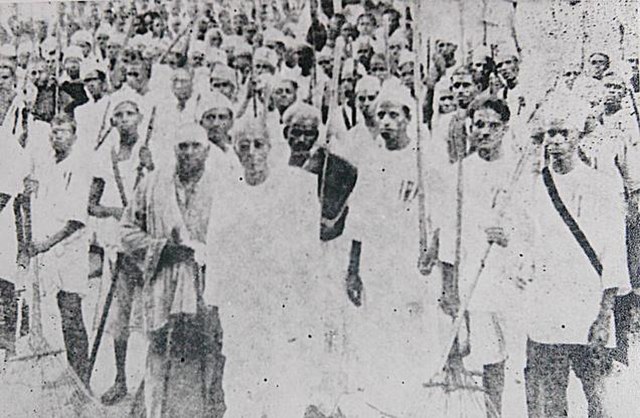The Vedaranyam March was a framework of the nonviolent civil disobedience movement in British India. Modeled on the lines of Dandi March, which was led by Mahatma Gandhi on the western coast of India the month before, it was organised to protest the salt tax imposed by the British Raj in the colonial India.
C. Rajagopalachari leading the march along with the volunteers.
A remembrance to mark the spot in Tiruchirappalli Cantonment, from where the march had begun.
The memorial at Vedaranyam
The Salt march, also known as the Salt Satyagraha, Dandi March, and the Dandi Satyagraha, was an act of nonviolent civil disobedience in colonial India, led by Mahatma Gandhi. The 24-day march lasted from 12 March 1930 to 6 April 1930 as a direct action campaign of tax resistance and nonviolent protest against the British salt monopoly. Another reason for this march was that the Civil Disobedience Movement needed a strong inauguration that would inspire more people to follow Gandhi's example. Gandhi started this march with 78 of his trusted volunteers. The march spanned 387 kilometres (240 mi), from Sabarmati Ashram to Dandi, which was called Navsari at that time. Growing numbers of Indians joined them along the way. When Gandhi broke the British Raj salt laws at 8:30 am on 6 April 1930, it sparked large-scale acts of civil disobedience against the salt laws by millions of Indians.
Gandhi leading his followers on the famous Salt March to abolish the British salt laws.
Mahatma Gandhi, Mithuben Petit, and Sarojini Naidu during the March.
Mahatma Gandhi at Dandi Beach 6 April 1930. Standing behind him is his second son Manilal Gandhi and Mithuben Petit.
Gandhi at a public rally during the Salt Satyagraha.







